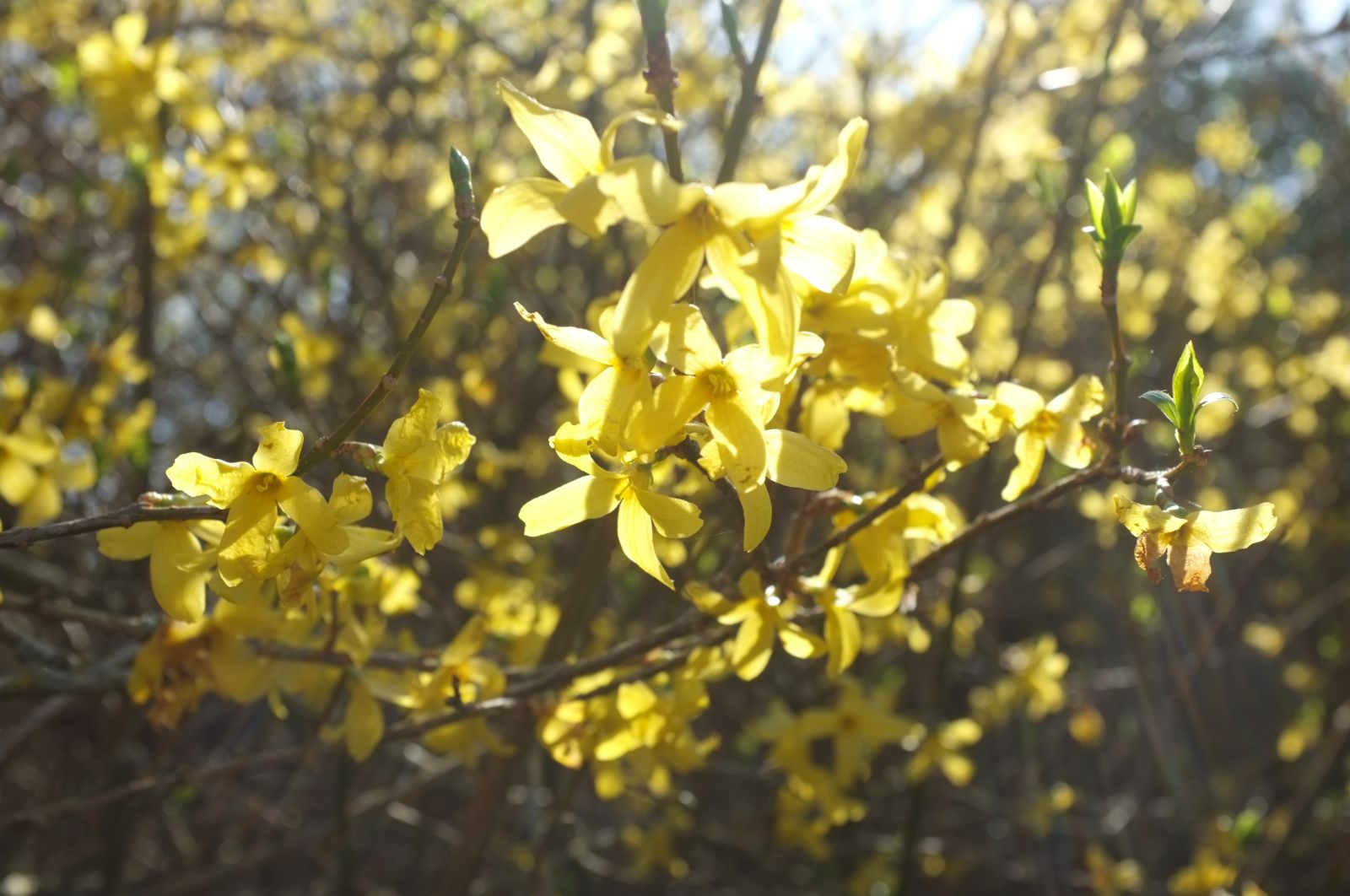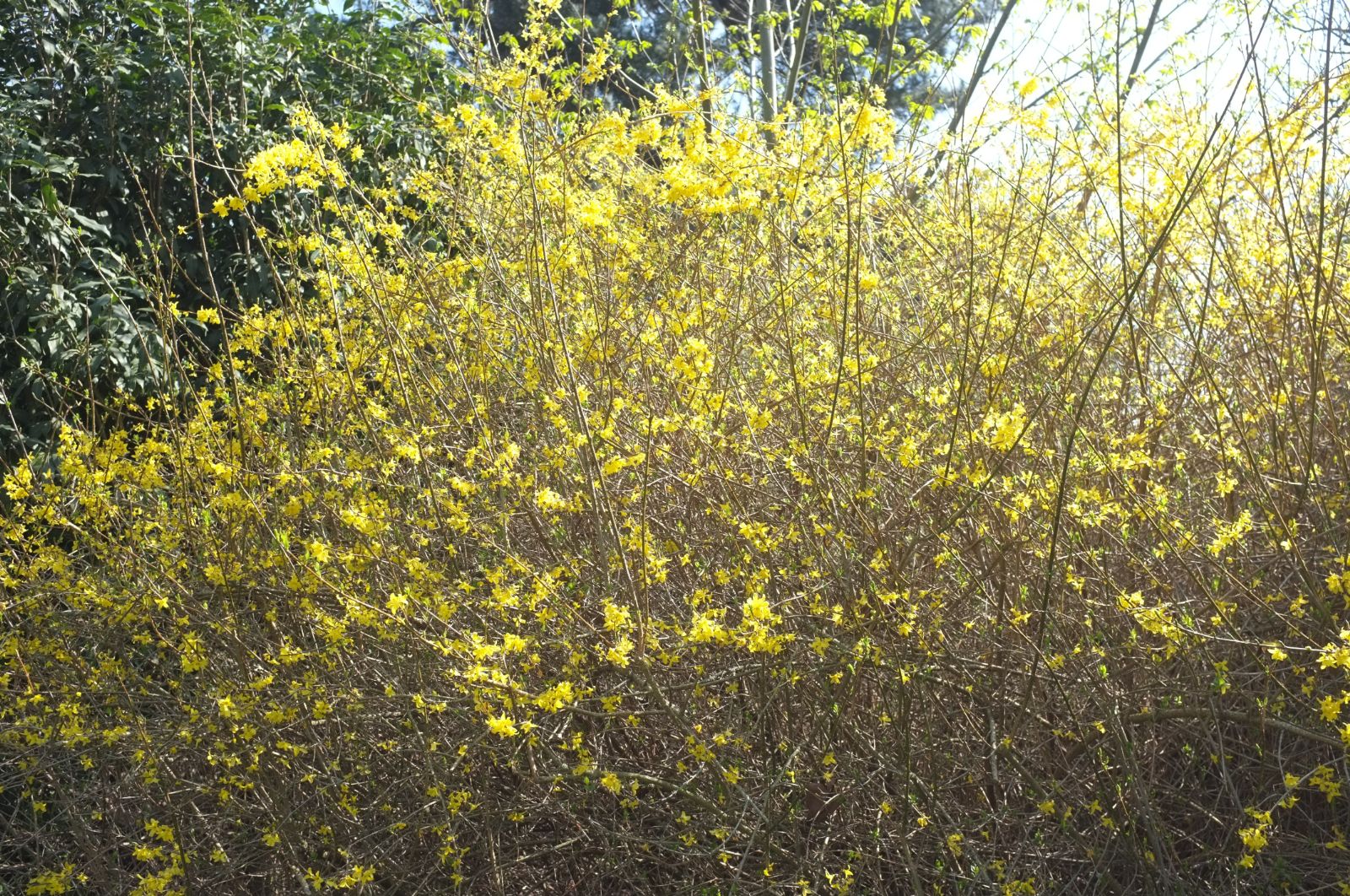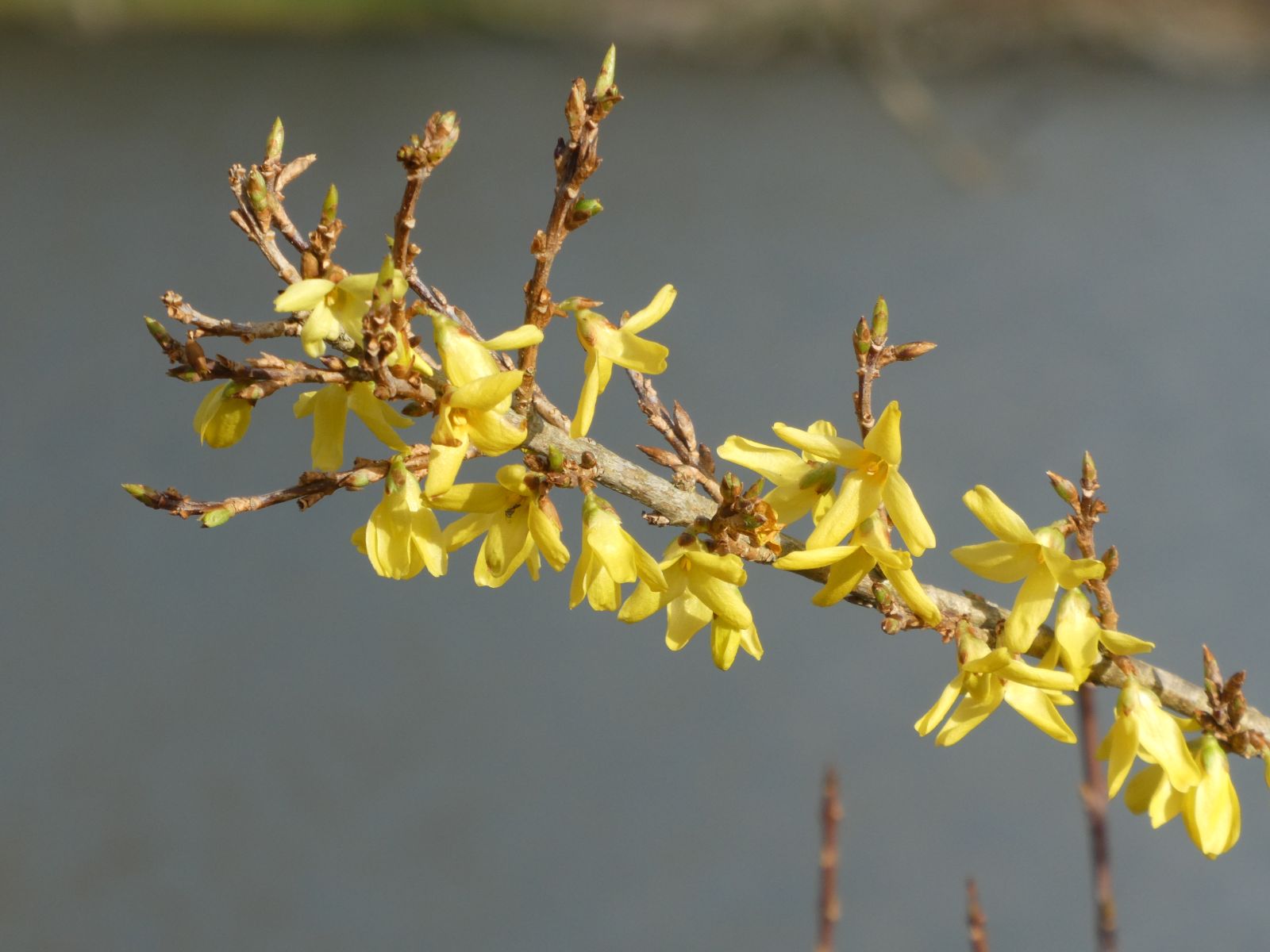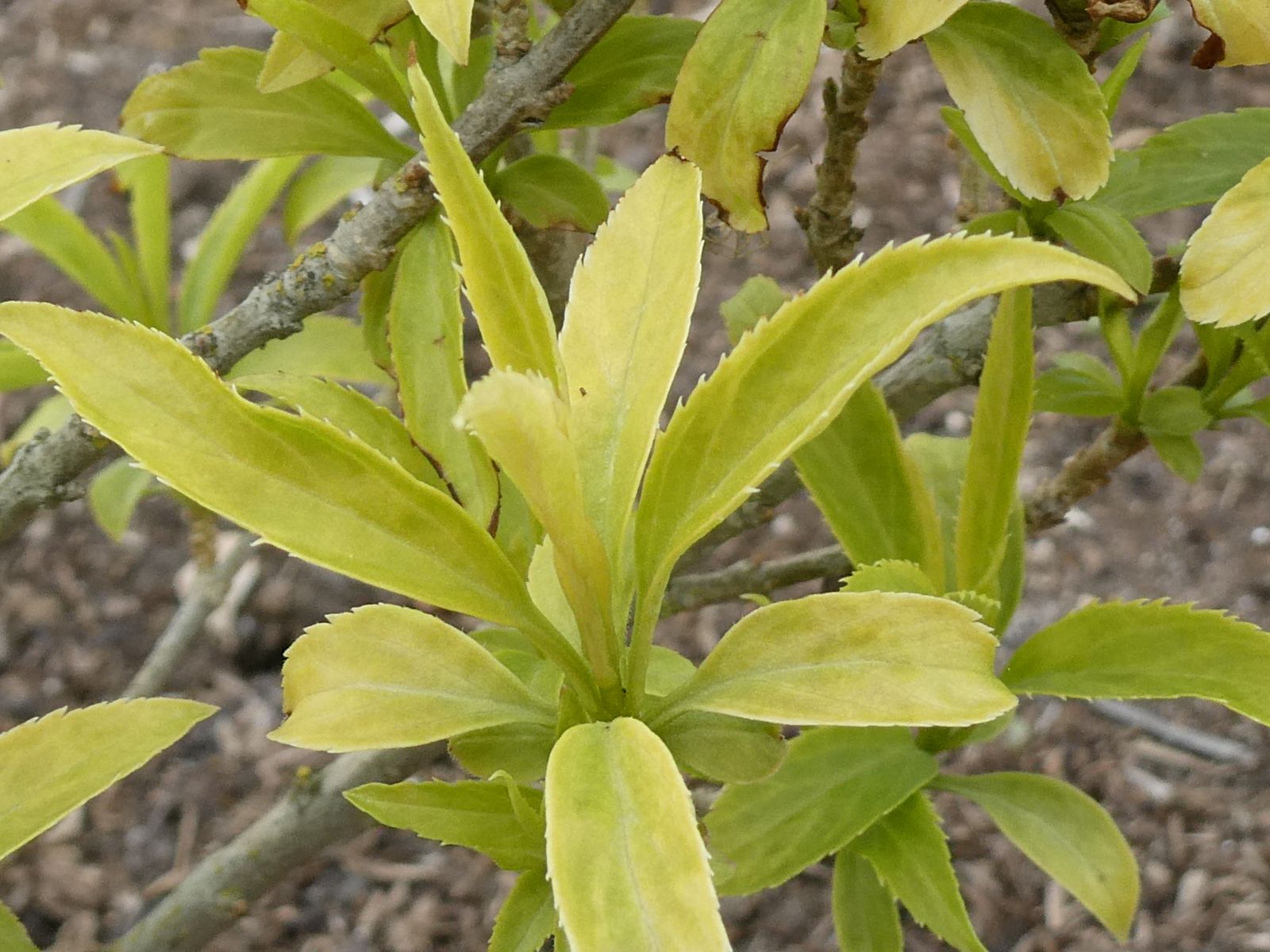Forsythia koreana
Sponsor
Kindly sponsored by
Monique Gudgeon, Sculpture by the Lakes
Credits
Owen Johnson (2022)
Recommended citation
Johnson, O. (2022), 'Forsythia koreana' from the website Trees and Shrubs Online (treesandshrubsonline.
Genus
Synonyms
- Forsythia viridissima var. koreana Redh.
- Forsythia koreana var. pilosa (U.C. La & Chae G. Chen) U.C. La
- Forsythia pilosa U.C. La & Chae G. Chen
- Rangium koreanum (Rehd.) Ohwi
Infraspecifics
Other taxa in genus
- Forsythia 'Arnold Dwarf'
- Forsythia europaea
- Forsythia 'Fontanna'
- Forsythia 'Ford Freeway'
- Forsythia giraldiana
- Forsythia 'Gold Splash'
- Forsythia 'Golden Times'
- Forsythia 'Happy Centennial'
- Forsythia 'Helios'
- Forsythia × intermedia
- Forsythia japonica
- Forsythia 'Kanárek'
- Forsythia × kobendzae
- Forsythia likiangensis
- Forsythia 'Little Renee'
- Forsythia 'Maluch'
- Forsythia × mandshurica
- Forsythia 'Meadowlark'
- Forsythia nakaii
- Forsythia 'New Hampshire Gold'
- Forsythia 'Northern Gold'
- Forsythia 'Northern Sun'
- Forsythia ovata
- Forsythia 'Paulina'
- Forsythia 'Princeton Gold'
- Forsythia 'Robusta'
- Forsythia saxatilis
- Forsythia 'Spring Beauty'
- Forsythia 'Spring Gold'
- Forsythia suspensa
- Forsythia 'Tremonia'
- Forsythia × variabilis
- Forsythia 'Verfors'
- Forsythia viridissima
- Forsythia 'Winterthur'
- Forsythia 'Yatgold'
Shrub to 4 m tall. Twigs glabrous; pith chambered. Leaves oblong-ovate to lanceolate, rather small, 3–8(–12) cm × 1–3(–6) cm, acuminate, base rounded; margin irregularly toothed towards the apex with c. 16–18 teeth, rarely entire; soon glabrous on both sides; veins scarcely impressed; petiole c. 13 mm long, glabrous. Flowers quite large, c. 3 cm wide. Calyx more than half as long as the corolla tube. Corolla brilliant yellow. (Bean 1981; Lee, Kim & Hong 1982).
Distribution South Korea Budong-myeon, Cheongsong-gun and Gyeongsangbuk-do
Habitat Mountain forests.
USDA Hardiness Zone 5
RHS Hardiness Rating H6
Conservation status Not evaluated (NE)
Like the other Korean endemic forsythias, F. koreana has a tiny and vulnerable wild population. In their 2010 study, Shin et al. were able to find just twelve plants at three sites, three of these at the seedling stage; they described the habitat as secondary woodland dominated by Pinus densiflora and invasive Robinia pseudoacacia (Shin et al. 2010). If the species were to be evaluated by the IUCN, it would qualify as Critically Endangered, though in its favour is Forsythia’s capacity to persist indefinately by layering and suckering. F. koreana can be differentiated from the Korean species which it most closely resembles, F. saxatilis, by its often smaller glabrous leaves with less impressed veins, and its slightly larger and more brilliant yellow flowers (Lee, Kim & Hong 1982). The cultivated plant described by Bean (1981), presumably at Kew, had significantly larger leaves.
Although so rare in the wild, this species has long been cultivated in Korean and Japanese gardens, where various variegated sports have been raised; several of these selections have quite recently been introduced to the United States. The species itself was first collected by Ernest Wilson in 1917 (Bean 1981), presumably from cultivated material, and a plant growing at the Arnold Arboretum was first described (as a variety of the Chinese F. viridissima) by Alfred Rehder in 1924; material was shared with the Royal Botanic Gardens, Kew in 1925 (Bean 1981). The Arnold Arboretum’s original stock of this very hardy species has gone, but this introduction may still survive at the Montreal Botanic Garden (Arnold Arboretum 2018). A second introduction to the United States occurred in 1928, when the Boyce Thompson Institute for Plant Research in New York received seeds from the Botanic Garden of the Imperial University of Tokyo (Arnold Arboretum 2018). Forsythia koreana remains commercially available in the UK from the Botanica nursery.
'All Gold'
An American sport of the old Korean clone ‘Ilgwang’, with yellow leaves (Dirr 2009).
'Bandal'
Synonyms / alternative names
Forsythia koreana 'Fuiri Rengyo'
A variegated forsythia with a broad, irregular pale yellow margin to its leaves, fading to cream; some leaves have central splashes of variegation and some have irregular wedges. The variegation is not very stable, and fades in sun. This, and ‘Ilgwang’, are both sold in Japan under the general name ‘Fuiri Rengyo’, but differ slightly, and a plant cultivated at Brookside Gardens in Maryland was renamed as ‘Bandal’ (which means ‘half moon’ in Korean) by Carl Hahn and Barry Yinger in 1983 (Hahn & Yinger 1983).
'Bronxensis'
Synonyms / alternative names
Forsythia koreana 'Weber's Bronx'
Forsythia viridissima var. bronxensis T.H. Everett
Of the three seedlings raised at the Boyce Thomson Institute for Plant Research in New York, from seed of Forsythia koreana received in 1928 from the Botanic Garden of the Imperial University of Tokyo. One was a dwarf sport, growing only 20–60 cm tall, with tiny leaves (2– 4.5 cm long), closely-set along the stems and edged with strikingly large and jagged teeth; the ‘pin-eyed’ flowers were primrose-yellow, but not always freely borne (Arnold Arboretum 2018; Bean 1981). Material was given to the New York Botanical Garden in the Bronx, where a later curator, Thomas Everitt, named the form Forsythia viridissima var. bronxensis in 1947, being unaware at this time of the plant’s origins.
The plant remains in commerce, though it is harder to progagate than some forsythias (DeWolf & Hebb 1971). It is now often sold under the name ‘Weber’s Bronx’ (presumably to commemorate Lillian Weber who was Everett’s Chief Horticultural Assistant in the 1940s); RHS nomenclature (RHS 2020) suggests that ‘Weber’s Bronx’ is a different clone, but there seems no historical evidence for this.
'Ilgwang'
Synonyms / alternative names
Forsythia koreana 'Fuiri Rengyo'
An old variegated clone, grown in Japan under the general name ‘Fuiri Rengyo’. The leaves flush yellow-green and darken, particularly in the centre. It was renamed ‘Ilgwang’ (Korean for ‘sunlight’) by Carl Hahn and Barry Yinger, from a plant growing in 1983 at Brookside Gardens in Maryland, alongside the slightly different ‘Bandal’ (Hahn & Yinger 1983). Ironically, perhaps, the foliage tends to scorch in full sun.
'Kumson'
Synonyms / alternative names
Forsythia koreana 'Aureo-reticulata'
Forsythia koreana f. aureoreticulata
Perhaps the showiest variegated forsythia, ‘Kumson’ has leaves marked clearly and brightly with creamy-white along the veins, rather like a vegetable giraffe, though this reticulation fades with age and in shade (Dirr 2009). It was introduced from Korea under this name to the United States in 2001 by the Spring Meadow Nursery (Arrowhead Alpines 2022) and was in the UK by 2004 (Royal Botanic Garden Edinburgh 1997). This is a ‘thrum-eyed’ clone.
‘Kumson’ is likely to be same as the plant known much earlier as f. aureoreticulata (or ‘Aureo-reticulata’), and which was propagated under this name as a rare plant in Korea by Bong Choon Lee, Chang Sun Kim and Min Hyuk Kwon in 1995 (Lee, Kim & Kwon 1995), although ‘aureo-’ might imply a subtly different plant with a yellow reticulation.
'McKCitrine'
Synonyms / alternative names
Forsythia koreana CITRUS SWIZZLE™
A sport of ‘Bronxensis’ found by Dan Moore of McKay’s Nursery in Wisconsin and sold from 2005. It is comparably dwarf but its jaggedly-toothed leaves are greeny-yellow with an irregular and somewhat darker centre; the colour fades in heat but autumn colour can be burgundy-red (Dirr 2009). It is now offered for sale in the UK (RHS 2020). (In Hatch’s Cultivars of Woody Plants (Hatch 2021–2022) the difficult cultivar name appears as ‘McCitrine’ and ‘McCitrus’).
'Seoul Gold'
Synonyms / alternative names
Forsythia koreana 'Seoul'
Leaves with an irregular yellow margin, maturing to cream, in Korea by 1993 and introduced to the United States by the Spring Meadow Nursery.
'Sunny'
Synonyms / alternative names
Forsythia koreana FLYING MACHINE®
A selection from Spring Meadow Nursery (USA) in 2021, with deep yellow, extra-large flowers. The trade name refers to the way the flowers spin round as they drop intact to the ground.
'Suwan Gold'
Synonyms / alternative names
Forsythia koreana 'Suwon Gold'
A brighter plant than ‘Seoul Gold’, developed using mass in vitro propagation in South Korea in 1994 and introduced to the United States by the Spring Meadow Nursery in 2002. The colour fades less in full sun (EurekaMag.com 2022).
The name of the Korean city where this clone originated is customarily transliterated as ‘Suwon’, but the plant seems to have been originally distributed in America as ‘Suwan Gold’.
'Variegata'
An old clone with leaves stippled white (Dirr 2009). It is represented at the UK National Collection at Sculpture by the Lakes in Dorset by cuttings taken from a plant grown under this name in the former collection at Pershore College (M. Gudgeon pers. comm.)








